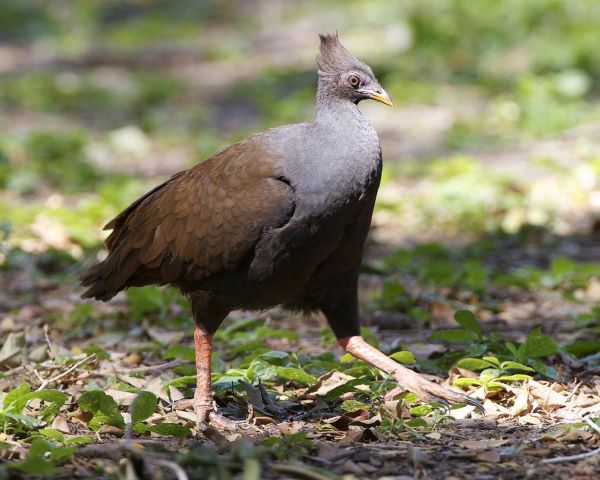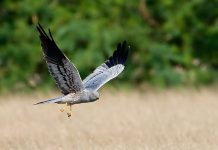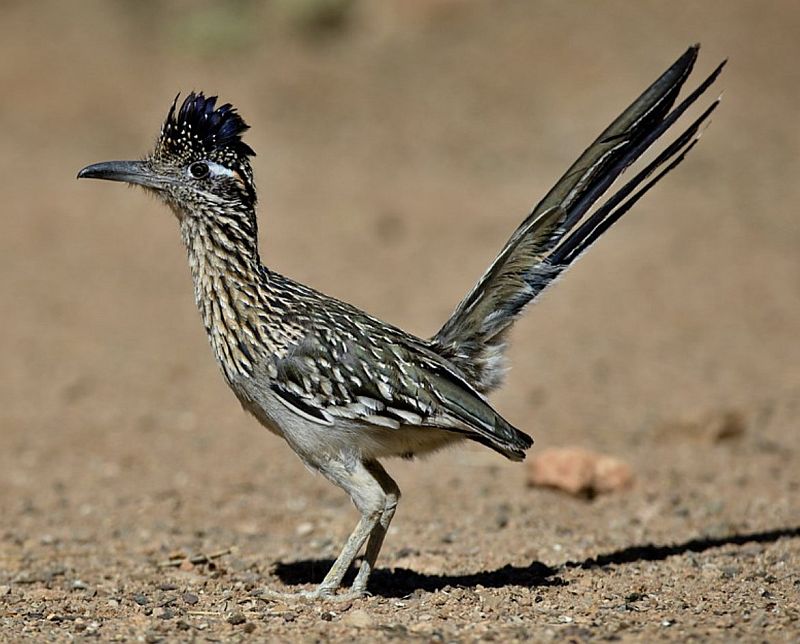Family: The orange-footed scrubfowl (Megapodius reinwardt) is a member of the Megapode family Megapodiidae in the genus Megapodius.
Distribution: Orange-footed scrubfowl is found in the coastal vine, rain, and monsoon forests of northern Australia between Kimberley’s and Broad Sound, Queensland, and offshore islands. Also found in southern Papua New Guinea and adjacent islands.
Habitat: The orange-footed scrubfowl is the smallest of the Australian mound builders. The piles of decaying plants and soil that it rakes up to incubate its eggs can be two to three meters tall and six to seven meters wide. All are scraped together under the shelter of the hot coastal rainforest and vine forest in which the birds live, and they include much vegetable matter, the fermentation of which produces the heat to hatch the eggs. Most are built not in open spaces but around the trunks of smaller forest trees. If disturbed, a bird may run or fly heavily to a low branch, where it often freezes with its head and neck stretched out.
Identification: Both adult sexes are similar. Crown brown to dusky, with a short crest. Hind neck and mantle mid-to-dark slate. Back, wings, and tail are mid-olive-brown, dark chestnut, or dusky brown, according to subspecies. Face and all underparts are mid- to dark slate grey. The eyes are dark brown. Bill is dark olive-brown, sometimes reddish brown. Feet and toes are dull orange salmon; claws and joints are dusky. The immature bird’s feet are duller and browner. The downy young is dark brown, peppered with black, and a faint buff.

Behavior: Although orange-footed scrubfowl are more social at the nest than other mound-builders, several pairs often share the same mound and maintain exclusive foraging territory throughout the year. These territories, ranging from one to two hectares in size, may or may not include a mound. Both sexes are advertised and defended, with their calls given largely at night. The male joins in with three chirrups, and then the female begins with a sorrowful, far-carrying, descending double-note kii-uu from a preferred roost, like a limb high over a brook.Out of breeding, usually only the male calls, but with the onset of breeding, the female joins in more and more until, during egg-laying, she becomes the initiator.
Breeding: Orange-footed scrubfowl probably mate for life. Both sexes develop and maintain their mounds, which they have utilized for several years. At the start of breeding, they dig out the top and fill it with leaves, twigs, and soil gathered from the forest floor up to 150 meters from the mound. This they turn over and mix with new material throughout the season. Nearly all active mounds are smaller subsidiary mounds of the same material, no more than two meters in diameter and less than one meter high. Containing no eggs, their purpose is not clear: they may be the foundations of future egg mounds, the practice mounds of young birds, or built as displacement activity by mound tenants. Before laying, the pair digs many test holes, one to two meters deep, sloping into the mound. Apparently, it is to check the condition of decay and temperature, for at the bottom, the birds dig a smaller hole into which they thrust their heads several times. Laying begins when the temperature reaches 29°–35°C; eggs are laid nine–20 days apart. In dry weather, eggs are placed in a damp part of the mound, and in wet weather, a higher, better-drained section is chosen. They are always packed with fine, dry material above about 30 cm of warm decomposing matter overlain with new cooler material. Chicks, developing to an advanced state inside the huge eggs, hatch inside the mound and dig their way to the surface. They can instantly run swiftly and, with well-developed wings, may flutter for short distances within half an hour. Their parents never look after them; they are totally on their own.
Vocalizations: Orange-footed Scrubfowl calls are loud chuckles, chortles, and screams; several birds may call in concert for long periods.
Nesting: Orange-footed Scrubfowl nesting and breeding occur in August–March. Nest a mound of soil or sand, sometimes 7 m in diameter and 3 m high, but compact as plant matter in it rots away.
Eggs: The bird lays 3–13 eggs; pale brown, stained dark brown; ellipsoidal, about 90 x 52 mm.
Diet: By day, scrubfowl spend their time on the forest floor, working on their mounds or quietly scratching in the litter for food: fallen fruit and seeds, shoots, and insects, snails, and other invertebrates.
Other Names: It is also known as Scrubfowl, Orange-footed Megapode, Jungle Fowl, and Sooty Scrub Fowl. Moreover, the people of West Arnhem called this bird Kurrukurldanj.
Size: Orange-footed Scrubfowl measures about 400 mm in length.
Races: There are about six races, four in Australia: one large and dusky in Kimberley’s Arnhem Land; one small and pale in Torres Strait; one large and pale on Cape York Peninsula; and one small and dark chestnut-backed in northeastern Queensland.
Read More: Superb Fairy-wren







